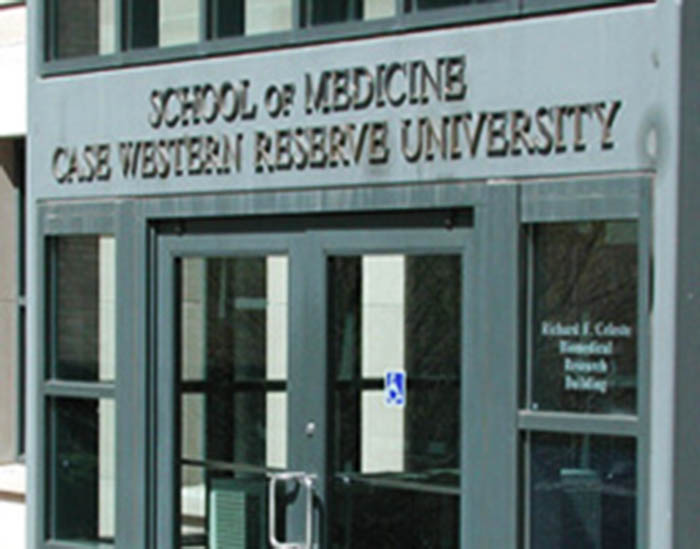Founded in 1843, the Case Western Reserve University School of Medicine has been training medical students for more than 165 years. It is currently ranked 24th in the nation according to U.S. News & World Report and has received praise as a top medical school by many organizations over the years.
“While our programs and graduates are exceptional, our facilities are aged and cramped,” said CWRU School of Medicine Dean Dr. Pamela Davis. “We have assured our accreditors that we will have a shovel in the ground or at least close to a construction start by the time they return in 2016.”
In order to uphold its promise, the medical school has begun plans to build a new medical education building. The new building to be started by 2016 would include state-of-the-art laboratories and seminar rooms designed to fit the needs of the school’s acclaimed Western Reserve 2 educational model. The building would also house the Weatherhead Institute for Family Medicine and Community Health, along with a base for the school’s community-engaged research and programs.
The Western Reserve 2 curriculum follows the theme that teaching should be based on problem solving. It dictates that students should accept responsibility for their own education, basic principles of medicine should be emphasized, teaching should be interdisciplinary, and basic sciences should be integrated with clinical sciences.
The national accrediting organization for medical schools described CWRU’s Western Reserve 2 curriculum as the “class of the field.” 20 percent of the Class of 2012 matched with programs affiliated with the nation’s top 10 medical schools.
“I cannot wait to see our students learning in seminar rooms designed explicitly for the Western Reserve 2’s inquiry-based model,” said Dr. Davis. “I am eager to see community research and outreach grow and expand in a central, easily accessible space. And, I am delighted at the prospect of a state-of-the-art space that gives students and faculty open, airy spaces for conversation and collaboration.”
Currently the plans for the building show that the building would be a five story structure and approximately 165,000 square feet. This would allow existing classroom spaces on campus to be restored to their primary use as research spaces. The new building would also increase class sizes so that they meet the request of the Association of American Medical Colleges, helping meet the projected physician demand nationwide.
The cost of the new building was estimated to be $50 million. Currently, the medical school has received $10 million each from the Mt. Sinai Health Care Foundation and the Cleveland Foundation.
“The leaders of both [the Mt. Sinai Health Care Foundation and the Cleveland Foundation] noted that their grants represented the largest their foundations ever had awarded,” said Dr. Davis. “They also emphasized that they supported this project because of their belief in the school and university and the vital importance of medical education and research to the future of greater Cleveland.”
Medical school alumnus Michael D. Eppig, MD, and Ruth S. Eppig have also committed $1.5 million to the project, bringing the current commitment total to $21.5 million. The university will begin construction on the building when it has received commitments to cover the project’s whole cost.
“This project depends entirely on our philanthropic success. Continued support from foundations, individuals and other organizations is required for us to realize our goal and launch construction,” said Dr. Davis.
“We believe that we have a strong case for this project, and will work to explain its importance to potential donors in Northeast Ohio and across the country.”
Once the building receives full funding and breaks ground, the medical school board hopes that the building will bring new students to campus.
“We believe this new building will make our medical school even more attractive to potential students and faculty, which in turn will help raise our overall stature in education, research and community health,” said Dr. Davis.
The plans for the building are already attracting prospective medical students to CWRU. Many current CWRU undergraduate students hope to stay in Cleveland for medical school in order to attend the highly-ranked medical school and utilize the state-of-the-art building.
“I want to go to CWRU School of Medicine because it has opportunities in both clinical medicine and cutting-edge research,” said Sapna Sundar, a current pre-med student.
“Since I’ll be at CWRU for four more years, I can’t wait to see the new medical school building unfold. It speaks volumes to CWRU’s commitment to always improving itself and preparing better physicians with hands-on training.”
As more students apply to the CWRU School of Medicine, admission standards are increasing. Students’ United States Medical Licensing Examination scores exceed the national average by four points. In addition, the students’ average entering MCAT score is 35.2, four points above the national average.
“Our students and faculty deserve space that matches their excellence and advances academic achievement,” said Dr. Davis. “Given what they have been able to achieve within their existing space, I cannot even begin to imagine the breakthroughs and triumphs they will experience in a modern new building.”


